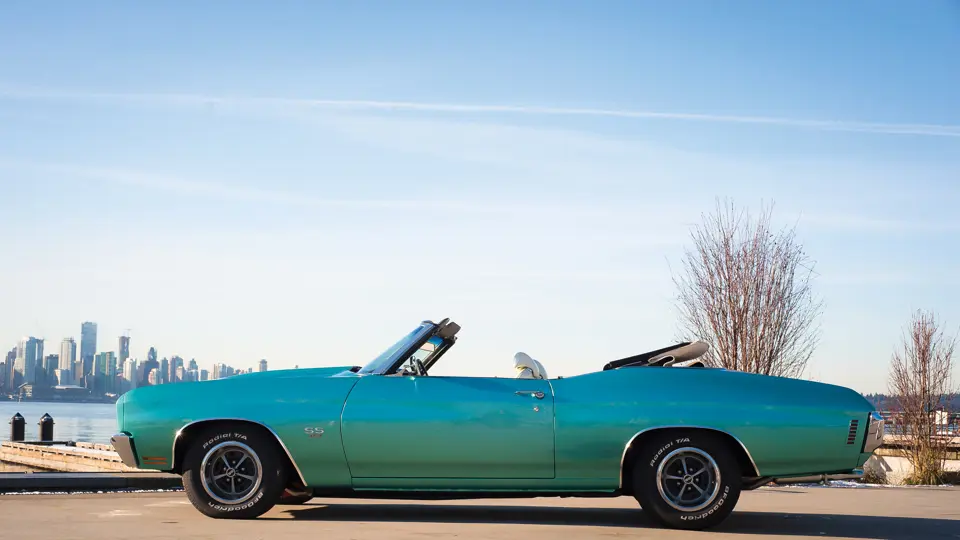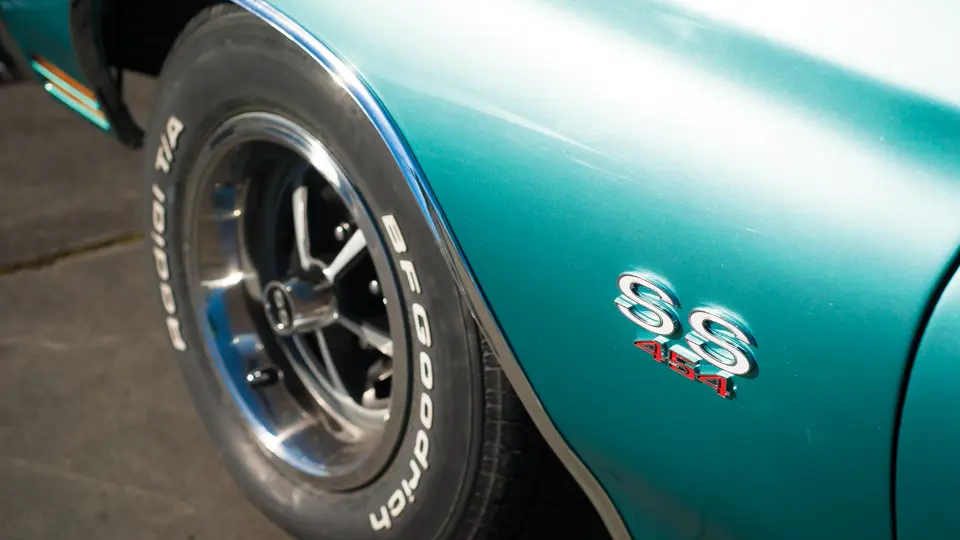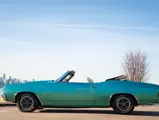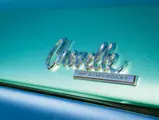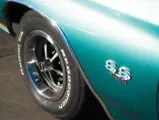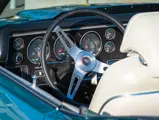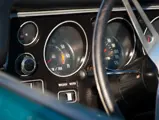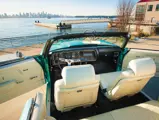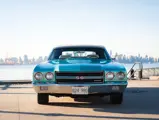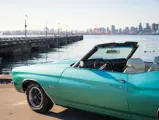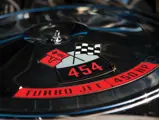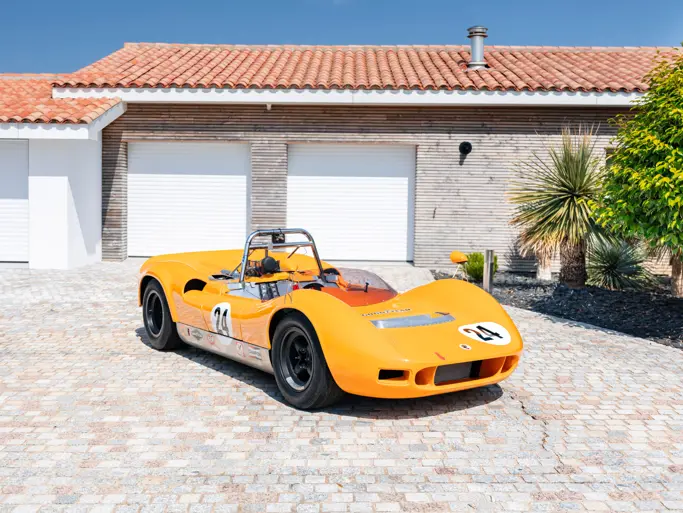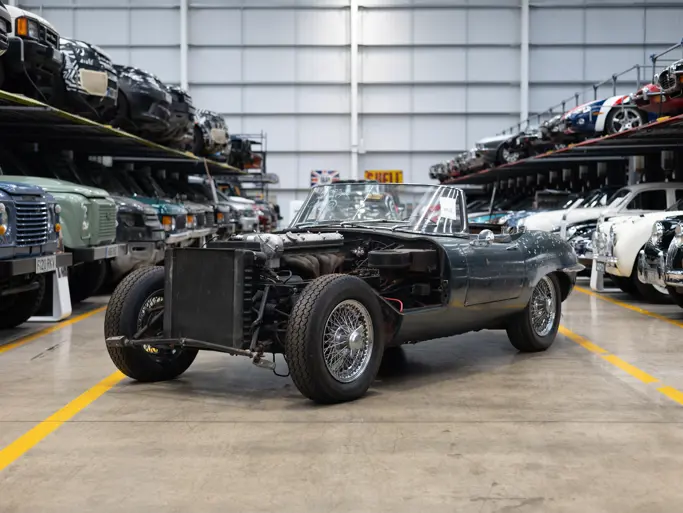
1970 Chevrolet Chevelle SS 454 LS6 Convertible
{{lr.item.text}}
$225,500 USD | Sold
{{bidding.lot.reserveStatusFormatted}}
- The ultimate, most desirable Chevrolet muscle car
- One of fewer than 200 LS6 Convertibles built in 1970
- A genuine four-speed LS6 example, as documented by its broadcast sheet
- Striking Medium Turquoise Metallic over parchment leather
- A centerpiece of any muscle car collection
450 hp, 454 cu. in. OHV LS6 V-8 engine with a Holley four-barrel carburetor, Muncie M-22 heavy-duty four-speed manual transmission, independent front suspension with A-arms and coil springs, live rear axle with trailing arms and coil springs, and four-wheel drum brakes. Wheelbase: 112 in.
Chevrolet first introduced the intermediate-size Chevelle in 1964, and it became an immediate sales success. The popular car was just what America wanted, as Chevrolet sold over 440,000 of them in 1970. Ads told us that the Chevelle’s “performance starts as soon as you’re seated.”
The Chevelle in SS 454 guise was known as the corporate A-body at General Motors. It was the bow-tie brand’s muscle car variant, and with the LS6 Turbo-Jet 454 V-8 option that is featured on this car, they weren’t kidding! The big block motor produced an advertised 450 brake horsepower at 5,600 rpm and 500 foot-pounds of torque at 3,600 rpm, which were the highest performance numbers of the muscle car era. Keep in mind this was a factory option that anybody could walk in and order from your friendly Chevrolet dealer for just an extra $263.30 on the window sticker. Some 4,475 buyers made that choice and were rewarded with higher insurance premiums to go along with the high performance. In fact, the car was rumored to produce 500 brake horsepower, but the factory claimed 450 in the interest of lower insurance costs.
Hot Rod magazine tested the car at the time and reported a 13.44-second quarter-mile at a speed of 108 mph, utilizing 8.4 mpg of premium fuel. The tester noted the biggest problem was trying to get the tires to hook up, as any stab of the throttle caused them to go up in smoke and slide sideways as a result.
The LS6 engines were assembled to tight specs at Chevrolet’s engine production facility in Tonawanda, New York. Workers began with a special four-bolt block that featured pre-tapped holes for a track-ready external oiling setup. Inside the block was a forged alloy steel crankshaft that was cross-drilled to maximize oiling capabilities. Tied to the crank by 7/16-inch rod bolts were eight forged steel connecting rods (magnafluxed for added rigidity). Eight TRW forged aluminum pistons squeezed the fuel/air mixture to an 11.25:1 compression ratio. Heavy-duty 3/8-inch pushrods transferred cam timing to the valves through 16 sets of beefy dual valve springs. Feeding the engine was a big Holley four-barrel carburetor on an aluminum dual-plane intake. A modified distributor and deep-groove pulleys were fitted, and a large air cleaner to take air from the RPO Code ZL2 cowl induction hood was also included. Mandatory options included the M22 Muncie four-speed transmission and a heavy-duty battery.
While a Super Sport, or SS, variant was part of the Chevelle lineup (starting with the humble 327 V-8 in 1964); the pinnacle was reached with the introduction of the LS6 engine in 1970. Chevrolet built a total of 53,599 Chevelle Super Sports in 1970, of which 8,773 were SS 454s. Of those, 4,475 included the LS6 option, with the overwhelming majority built as two-door coupes. According to author Robert Genat in his book Chevy SS: 50 Years of Super Sport, exact production figures for the 1970 LS6 Convertible are not known, but it is thought to be in the 200-unit range. Mike Mueller states in his book Chevelle: Collector’s Library that production estimates range from 20 to 80. Regardless, this is one rare production automobile and one of the “holy grails” to muscle car collectors.
More importantly, this LS6 Chevelle is the “real deal.” It was previously part of the legendary collection of Milton Robson. Robson, known for his discerning tastes, only collected the best muscle cars available, and this example is no exception. He acquired the car in March 1991 from another well-known muscle car collector, Carl Dwiggins, who meticulously restored the Chevelle from the ground up. During the restoration, the original broadcast sheet was found, and despite being in less than perfect condition, it confirms the LS6 engine as being part of this car’s original equipment.
The current owner has properly stored this 50,000-mile car and has used it sparingly since purchasing it in November 2010. He has never shown the car since acquisition, making it an ideal candidate for the concours and show circuit. It is painted a Medium Turquoise Metallic (Code 34), with a white convertible top and parchment interior that features optional Strato-bucket seats, which makes for both a unique and striking color combination. The appropriate white letter Goodyear Polyglas tires ride on Magnum 500 wheels, and the car is fitted with an AM radio, a clock, and full instrumentation. Two unique features are also included with this car, the stripe delete and the cowl-induction delete, which were no doubt both the original owner’s choices, and they make this one of the stealthiest sleepers of the muscle car era.
This Chevelle has it all: the one-year-only powerful LS6 engine, a four-speed transmission, a dynamic color combination, documentation, a superb restoration, proper care, and perhaps most important of all, rarity and exclusivity among muscle cars.


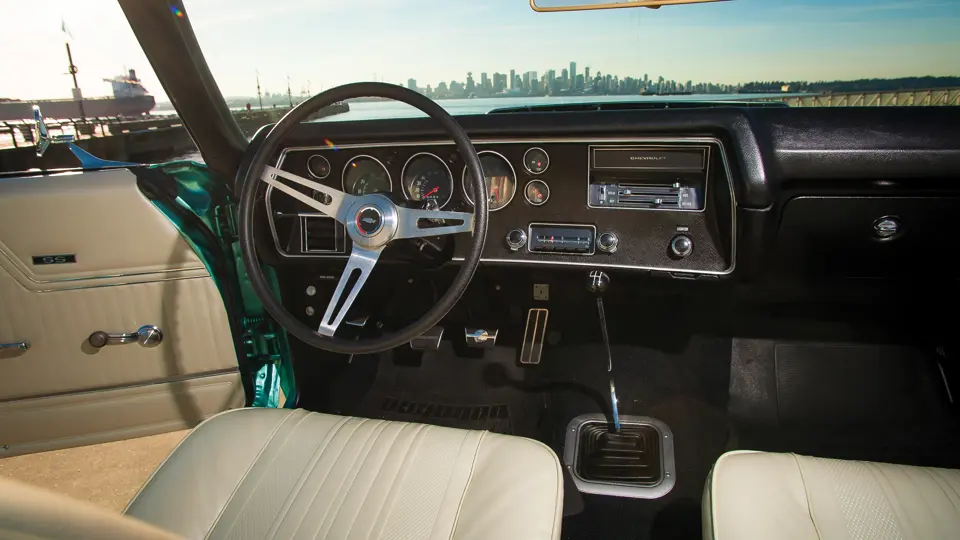

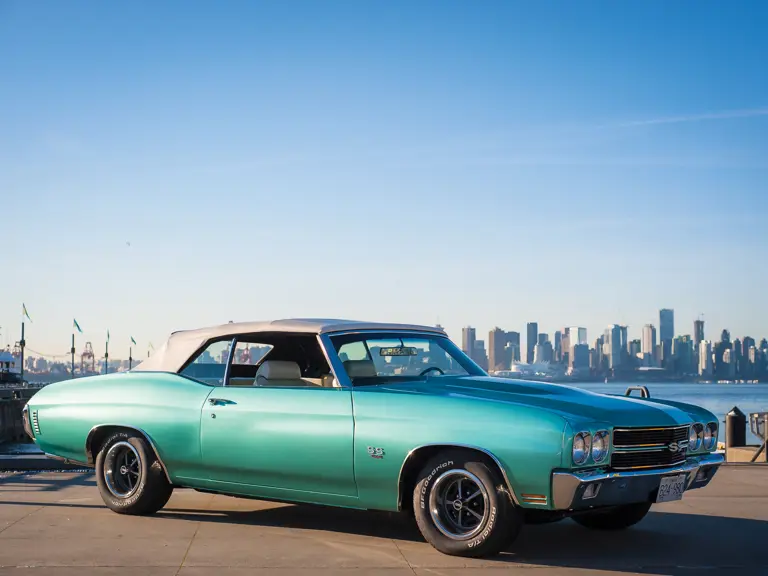
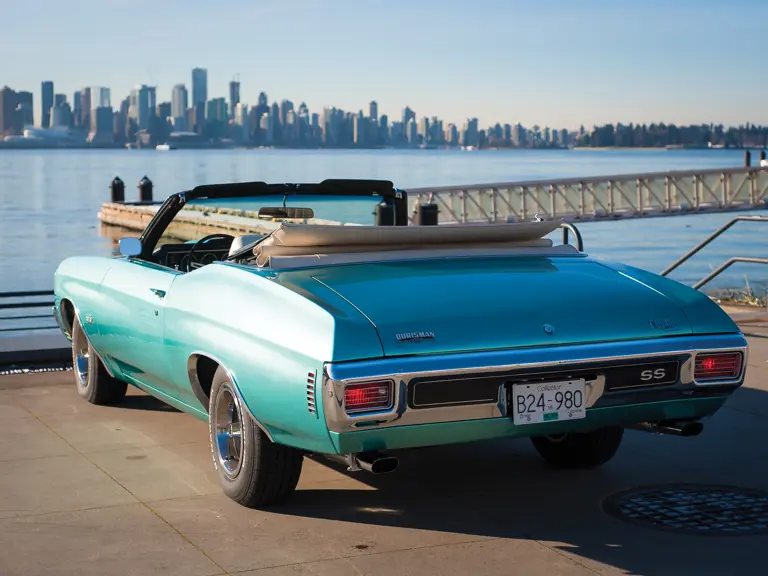

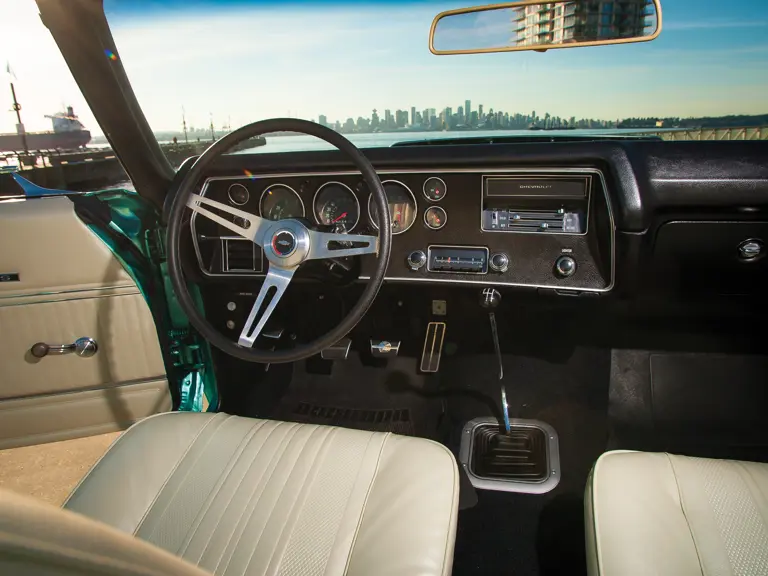
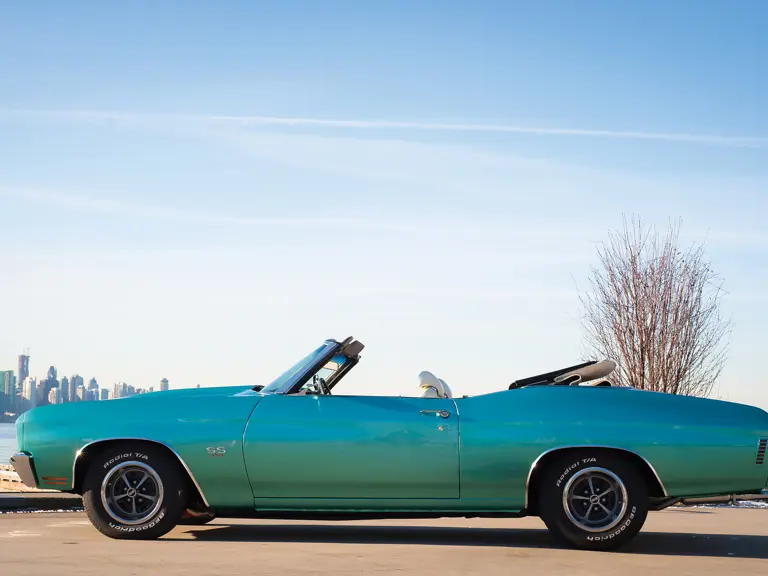


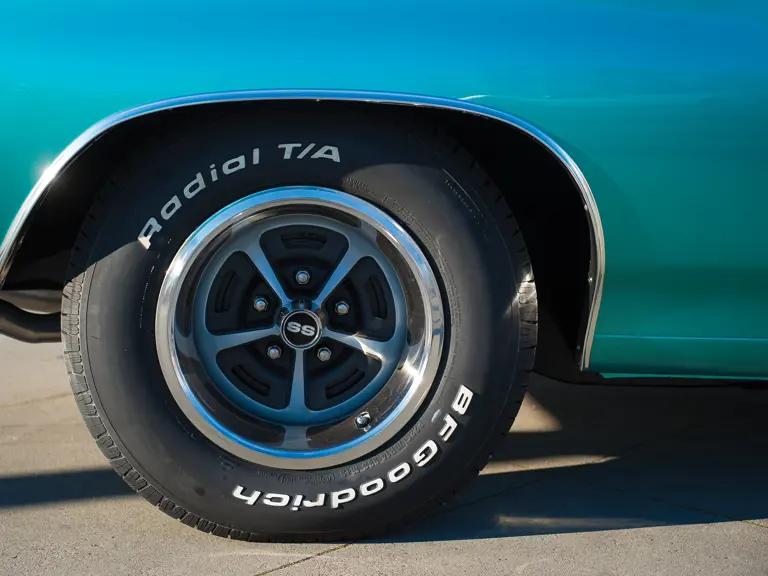
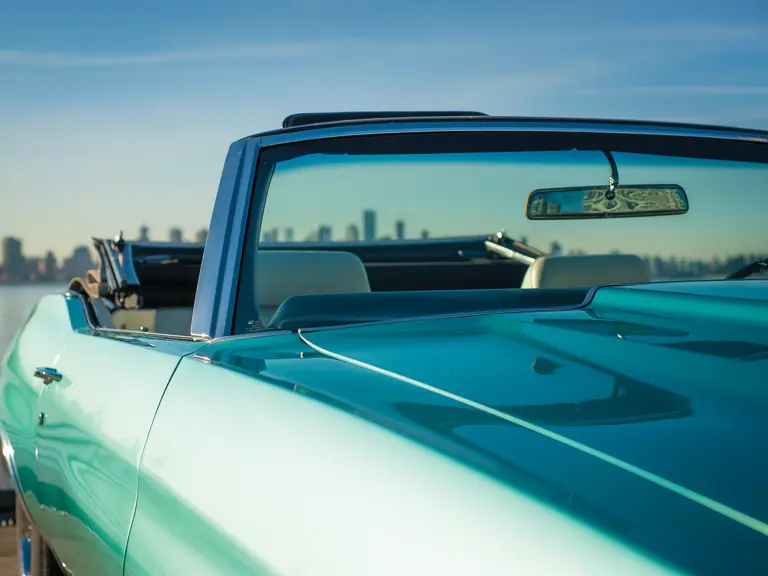
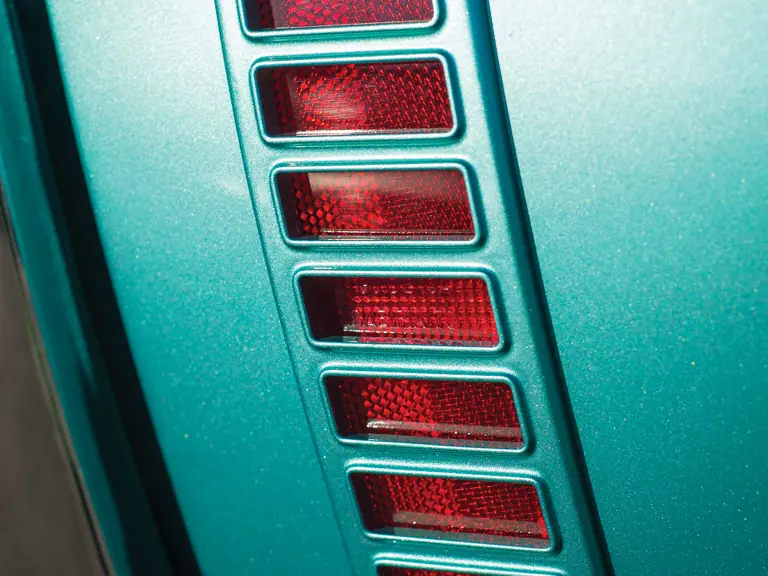
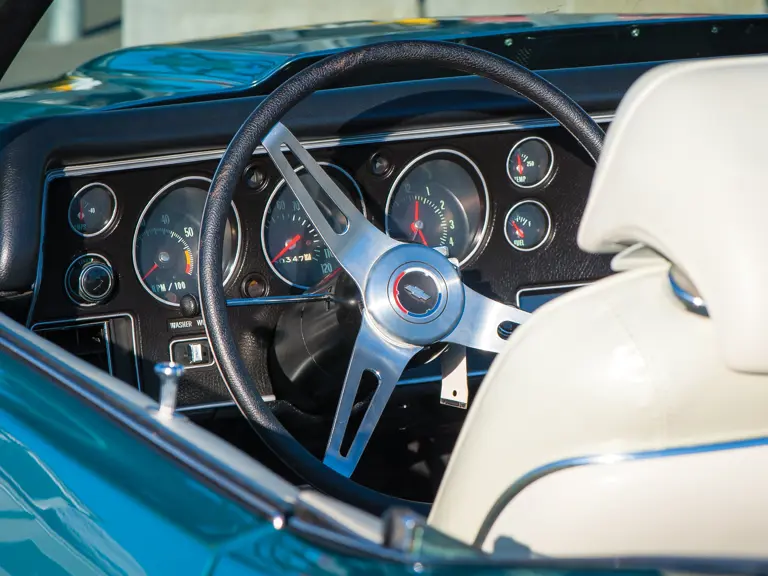
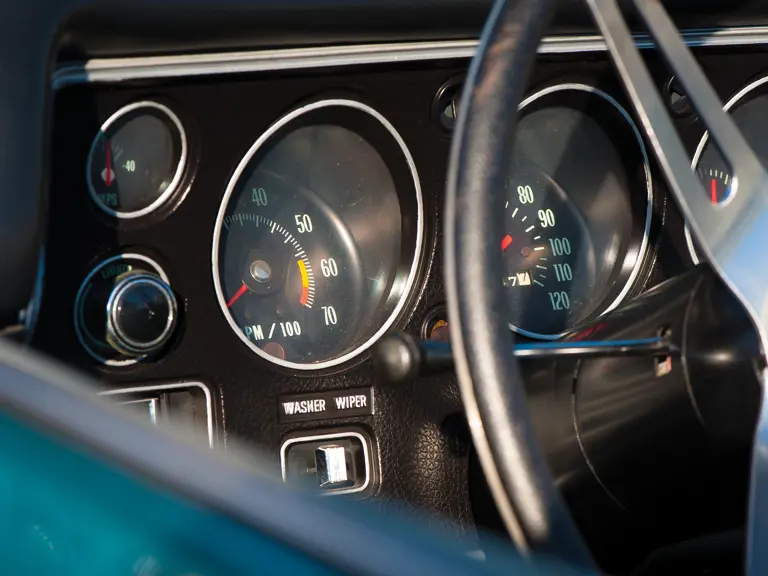
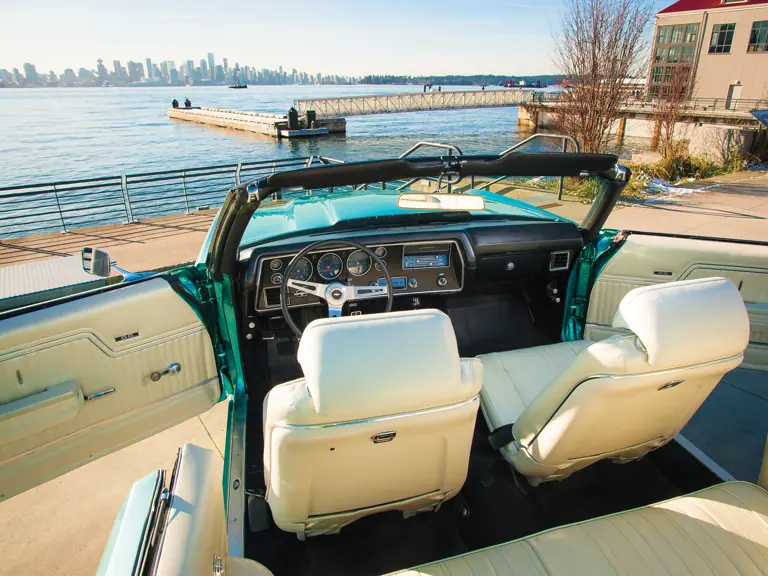
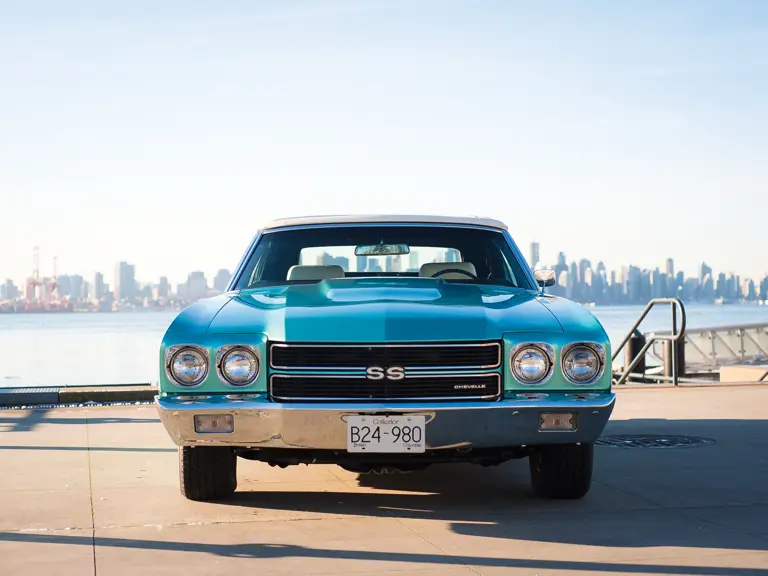

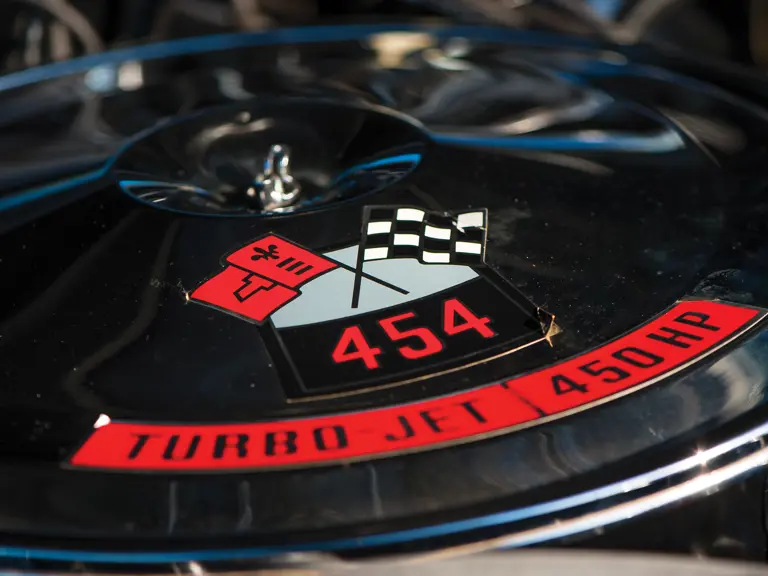
 | Phoenix, Arizona
| Phoenix, Arizona
